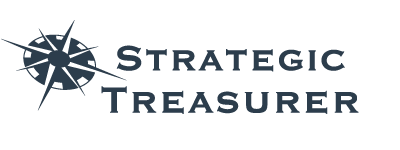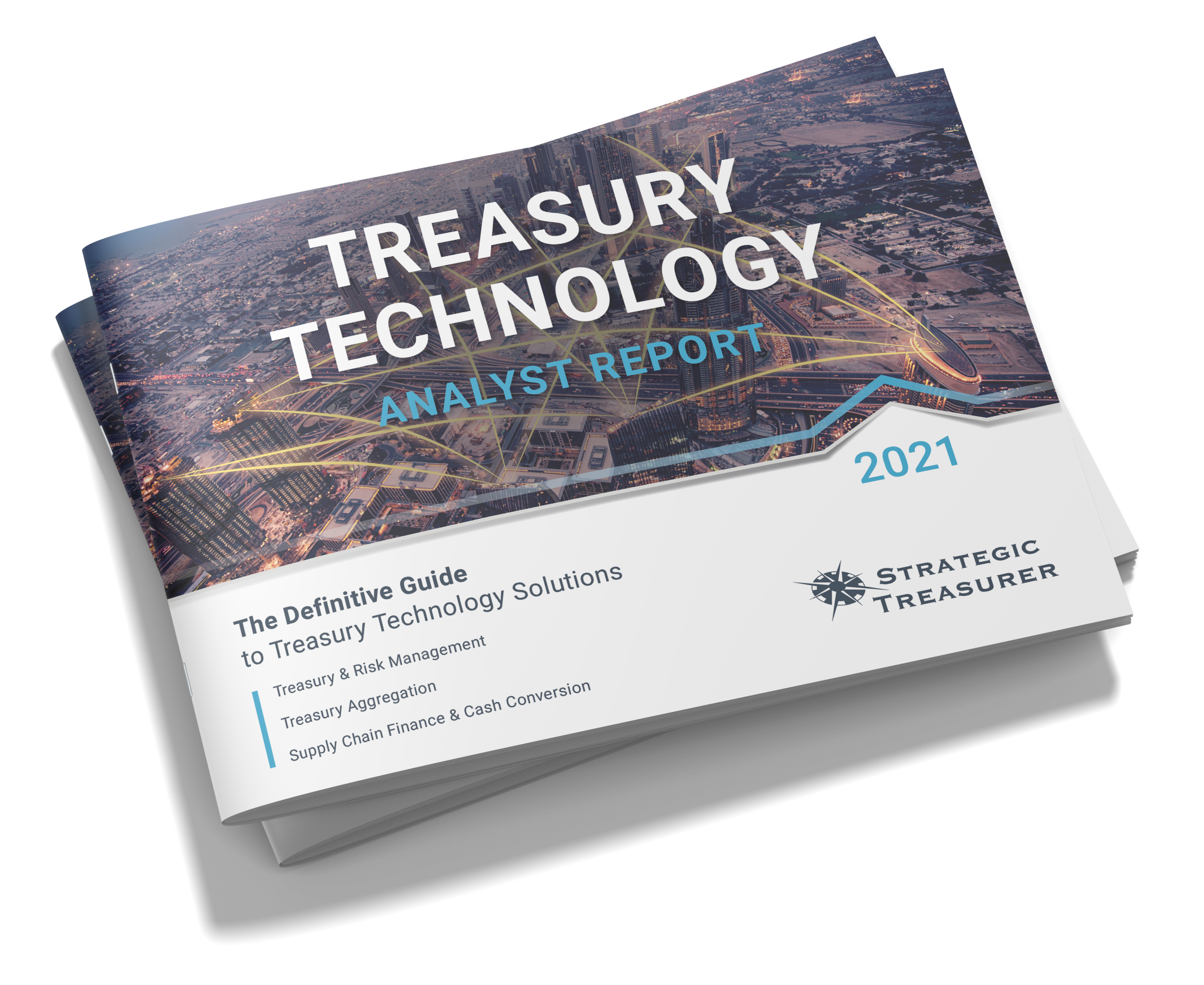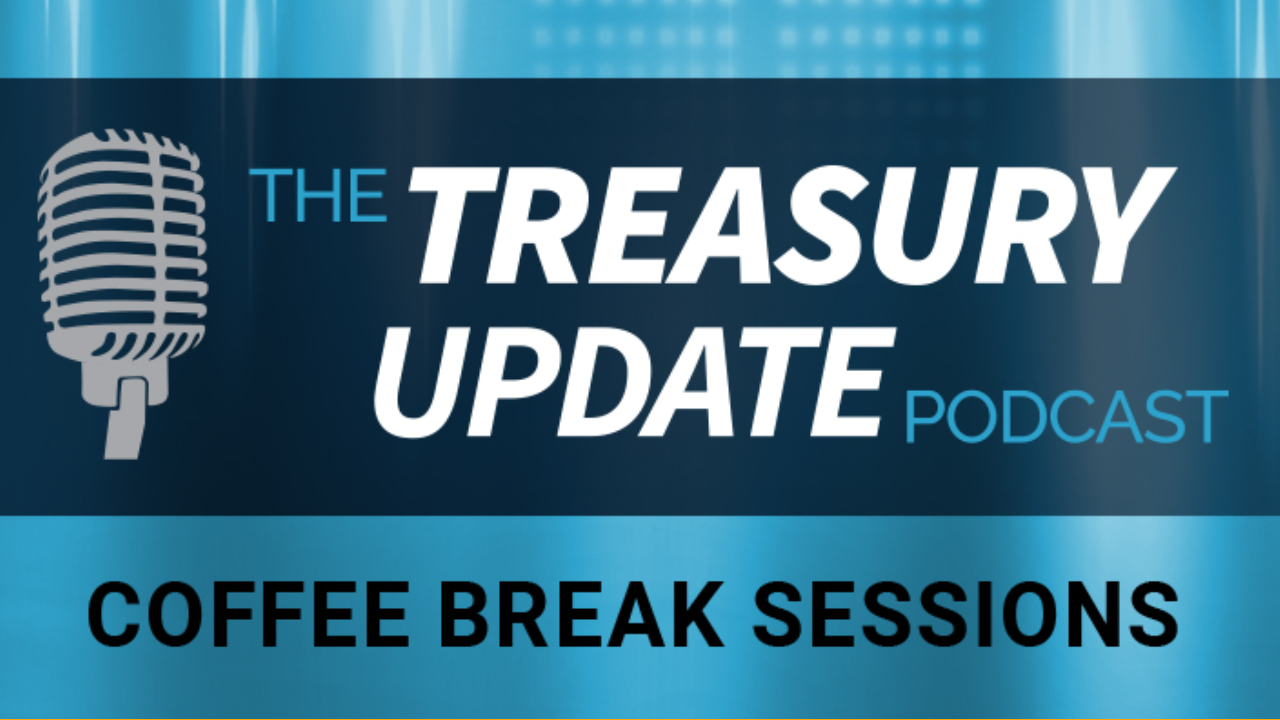
Session 65
Coffee Break Session:
What Is the Efficient Frontier?
What is the efficient frontier? Coffee Break Session Host Jason Campbell sits down with Strategic Treasurer’s Senior Advisor, Paul Galloway, for a conversation on the efficient frontier. They cover what the efficient frontier is and how the model is used by companies for investing. Listen in and learn a little bit about the efficient frontier.
Host:
Jason Campbell, Strategic Treasurer


Speaker:
Paul Galloway, Strategic Treasurer


Episode Transcription - (Coffee Break Session Series) - Episode 65 - What Is The Efficient Frontier?
Jason Campbell 00:03
Welcome to the Treasury Update Podcast, Coffee Break Sessions presented by Strategic Treasurer covering foundational topics and core treasury issues. And about the same amount of time it takes you to drink your cup of coffee. I’ll be your host Jason Campbell business development leader at Strategic Treasurer. Before we get started, I’d like to send a huge thank you to Alexa Cook for hosting these sessions for the past three years. Thank you so much for providing such pivotal information to the world of treasury. And we wish you the best of luck in your future endeavors. So starting on kicking off in this coffee break sessions, I really want to kind of bring in a little bit of a series of investment topics, chatting with me today is Paul Galloway, Senior Advisor at Strategic Treasurer. Paul, how are you doing today? Doing great, Jason. Fantastic. So getting things prepared for the session today is really kind of looking at these investing topics. And one of the things that kept popping up was efficient frontier, kind of walk us through what exactly is the efficient frontier.
Paul Galloway 00:59
This is an investment concept that’s been around for quite some time, and has been a foundational basis for portfolio management for decades. So I’m going to try to keep it simple and think about the efficient frontier in terms of a graph. So on the horizontal axis, you have standard deviation of potential returns, which is risk. And on the vertical axis, you have expected return what you think you’re going to get for return on a particular asset or security. And what the efficient frontier does is it says, Okay, let’s take a stock and bond portfolio to different security classes, and make up a bunch of different portfolios based on expected return and risk, which is standard deviation. And when you do that, you can make up a curve that starts in the lower left corner of this graph, it builds up and then it starts curving when it gets up so far out and off to the right. Any point along that curve. There is a portfolio that has maximum expected return given a certain level of risk.
Jason Campbell 02:22
Why is this theory important to making an investment decision for anyone?
Paul Galloway 02:27
That’s a great question. Not every investor is the same, meaning that certain investors have a willingness to take on more risk than others, they also may have the ability to take on the risk. And some folks may not be willing to or have the ability to take on additional risks. So it comes down to a person’s risk appetite. And so if you were to go and sit down with your personal advisor for your IRA, for instance, they’re gonna go through and ask you a bunch of questions about risk tolerance, if you are a less risky person, you would pick out a portfolio at the point where you get the maximum expected return for the most screen risk that you’re willing to take. Somebody else could be more risky, or willing to take on more risk. And you will go up the curve further to the point where you hit their expected return, given their level of risk. If you were to look at the expected returns of those two, the less risky person is going to have a lower expected return. And the more risky person is going to have a higher expected return. Now, of course, history or past returns are not a direct reflection on the return you’re actually get. There’s a lot of factors that go into that. But if you’re able to build a portfolio that maximize your potential expected return, given risk, that’s what you’re going to do. And the efficient frontier maps out what that looks like.
Jason Campbell 04:11
So really what we’re talking about, it’s more like it’s that gamble, right? It’s that either the thrill of the hunt or the thrill just be more conservative.
Paul Galloway 04:19
Exactly.
Jason Campbell 04:20
So what makes it so efficient.
Paul Galloway 04:22
The efficiency of this particular approach is that when you map out all the potential expected returns given level of risk, you’re able to maximize your expected return, you can have a particular level of expected return. And you could have all kinds of different portfolios that might fall in the same risk category, but would offer less expected return. So as an investor, I’m going to pick whatever is going to give me the maximum. So if the lowest portfolio is let’s say, my expected return that’s maximized for the given level of risk is 5%. But I go down for the same level of risk, I can pick a portfolio that offers 3% return, I would never pick the 3% portfolio, I would always pick the 5% portfolio. Why? Because I have the exact same level of risk investors, they’re always going to pick the higher return, at least they should pick the higher return.
Jason Campbell 05:36
So are there any inefficiencies in this theory?
Paul Galloway 05:39
The inefficiencies in the theory are that expected return turns out to be something different than what actually you know, what you’re expected to have. The risk associated with a particular investment may end up being more risky because of things that you didn’t know. Or you were able to find out through your fundamental analysis that you did on the particular investment. So sometimes there’s hidden risks associated with investments. And we’ve seen that happen and markets from time to time, where companies have falsified information or held back information that was relevant to investors, or things are happening on the inside that influence the price of a sock. Yes, it’s efficient in terms of getting you to the maximum return given level of risk, but doesn’t capture everything in the market.
Jason Campbell 06:32
So with all that being said, Now, is it possible for the frontier to become even more efficient?
Paul Galloway 06:39
Absolutely. So we talked about a portfolio of stocks and bonds earlier. And we think about that curve that we created if you add another asset class, let’s say real estate to that mix. So you got stocks, bonds, and real estate. Now, real estate has a different expected return risk profile than stocks and bonds, the addition of real estate, you can actually push the efficient frontier out, meaning that you can get an even better expected return for a given given level of risk.
Jason Campbell 07:18
Thank you so much for all that information around the efficient frontier. Thank you for joining me today, Paul. If for our listeners, please be sure to tune in every first and third Thursday of the month for a new episode of the Coffee Break Sessions. As usual, if you have any questions, comments, or any suggested topics you would like to hear, please send us a note at podcast@strategictreasurer.com. Until next time, take care.
Announcer 07:43
This podcast is provided for informational purposes only, and statements made by Strategic Treasurer LLC on this podcast are not intended as legal, business, consulting, or tax advice. For more information, visit and bookmark strategictreasurer.com.
Researching new treasury and finance technology can be overwhelming. Strategic Treasurer has stepped in to help. Explore our definitive guide to the treasury technology landscape and discover detailed, data-based coverage of:
- Treasury & Risk Management Systems
- Treasury Aggregators
- Supply Chain Finance & Cash Conversion Cycle
Coffee Break Sessions – A Treasury Update Podcast Series
A part of the Treasury Update Podcast, Coffee Break Sessions are 6-12 minute bite-size episodes covering foundational topics and core treasury issues in about the same amount of time it takes you to drink your coffee. The show episodes are released every first and third Thursday of the month with Host Jason Campbell of Strategic Treasurer.




